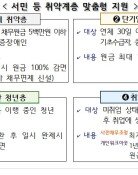Specific timeline for complete denuclearization is needed
Specific timeline for complete denuclearization is needed
Posted April. 30, 2018 08:07,
Updated April. 30, 2018 08:07
U.S. President Donald Trump said on Saturday (local time) a meeting with North Korea could take place over the next three or four weeks, two to three weeks earlier than previously expected May or early June. During a phone call, the two leaders said a North Korea-U.S. summit meeting should be held as soon as possible to maintain momentum for the success of the summit, according to South Korea’s presidential office Cheong Wa Dae. In the 75-minute phone conversation, Moon and Trump also explored two to three potential locations for the summit.
North Korea leader Kim Jong Un said at the April 27 inter-Korean summit on Friday he would shut down one of the nuclear test sites in Punggye-ri in May and invite experts and journalists from South Korea and the United States into the country, South Korea’s presidential office said Sunday. “If they come and see, they will understand that there are two bigger tunnels than the existing test facilities and they are in a very good condition,” Kim was quoted as saying by South Korean officials. “Once we talk, they will realize that I am not a person who will fire a nuclear weapon to the South or the United States. If we build trust and are promised no invasion, why would we live with the nuclear weapons?”
As soon as South and North Korea released a joint statement at the truce village of Panmunjom, the inter-Korean and the North Korea-U.S. relations seem to gain momentum. The two Koreas confirmed the goal of realizing nuclear-free Korean Peninsula through complete denuclearization, the Panmunjom Declaration read. Though it may be proclamatory, experts in the United States and the international community view the latest breakthrough as a significant step toward a world peace, raising expectations for nuclear problem. In that sense, the summit is regarded as a very good start at this juncture of embarking on a new journey for peace on the Korean Peninsula.
A well-scripted event and performance by the two leaders at the summit in Panmunjom suggests that a crucial agreement on denuclearization has already been made behind the closed doors, yet to disclose for the much-anticipated meeting between Trump and Kim, speculations say. In particular, Kim Jong Un’s attitude during the summit helped in part dismissed doubts on his real intention. Kim did not only sign the joint agreement but he told Moon that he would deliver the promises they made by publicly shutting up of his nuclear test sites. North Korea’s state media reported on the two-leader’s joint declaration, mentioning denuclearization. All of these appeared mostly positive.
Still, on the issue of denuclearization, the summit Friday acted as a guide to the to-be-held summit between Trump and Kim where specific steps, timetables and details for denuclearization will be discussed. North Korea declared a complete denuclearization, but it remains to be seen whether Kim’s denuclearization is consistent with Trump’s complete, verifiable and irreversible denuclearization. Kim wants a phase-out nuclear disarmament while Trump wants to dismantle the North’s nuclear program at once through a package deal. Only time will tell whether Kim will meet the demands from Trump, who will push for the completion of denuclearization process within one or two years.
Furthermore, it is still not clear what Kim may demand in return for abandoning his nuclear arsenal. Showing an eagerness for the upcoming talks with Trump, Kim said he would build trust and officially end the war if Washington promises not to invade, however, specific requirements that Kim made have not been released. How negotiations between Pyongyang and Washington will go depends on what he asked for. In the past negotiations on nuclear issue, and after signing previous agreements, North Korea would deploy unpredictable negotiation strategies to put the other parties in a deadlock. This is why we cannot paint a rosy picture about Kim’s sudden change in tone.
Now the ball is in their court – for the North Korea-U.S. summit, but this is not the only matter for them. Denuclearization is a matter that will determine the destiny of South Korea as well as interests at stake of neighboring countries such as China, Japan and Russia. This will have an immediate impact on the South Korea-U.S. alliance. In fact, U.S. Defense Secretary James Mattis said if a peace treaty is concluded, it is possible to discuss at the future negotiating table whether U.S. forces based in South Korea should be reduced. More vigilance and close coordination based on the ironclad alliance are needed than ever.
The Panmunjom declaration is substantial in its scope, which includes improving inter-Korean relations and easing military tension. To discuss details, ministerial-level talks will be held in May. All issues to be discussed here should go in tandem with denuclearization. To be sure, the South Korean government will not rush to any conclusion. But it should be cautious not to be seen as attempting to rush for diplomatic success or crack international cooperation.
Based upon the historic summit between Seoul and Pyongyang, Moon will play an important role in the international community to broker a successful North Korea-U.S. summit meeting by holding China-Japan-Korea trilateral summit and the South Korea-U.S. summit to be held soon in Washington. He made a series of phone discussion with Trump and leaders of neighboring countries to inform of the outcome and ask for support. It is my hope that he will serve as an honest mediator in ushering in a new order in Northeast Asia and an earnest negotiator in leading a creative diplomacy.






